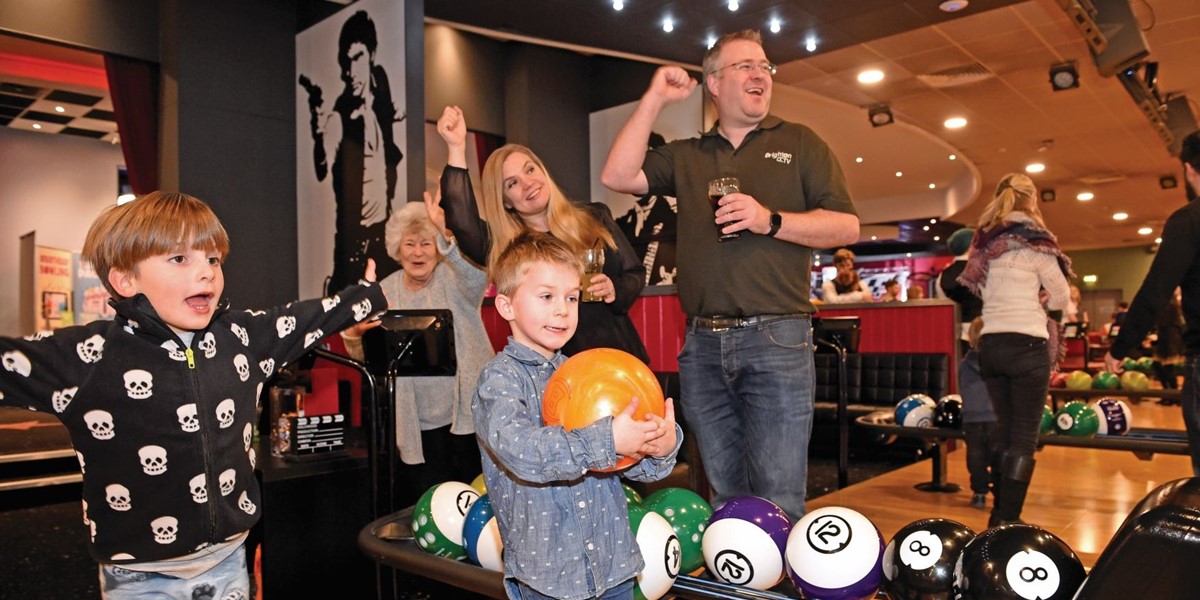Find out more about how this website uses cookies to enhance your browsing experience.
Technology - The enabler that powers Hollywood Bowl Group

Hollywood Bowl Group is the UK’s leading ten-pin bowling business, operating 58 centres nationwide under the Hollywood Bowl, AMF Bowling and Bowlplex brands.
In 2012, the group implemented CRM driven technology to manage their operations and year on year they have improved their revenue performance. They attribute this to increased customer visits year-on-year leveraging the Go system, provided by Green 4, to encourage to visit again via targeted marketing activity.
Peter Oliver, Founder and Director of Green 4 speaks to Stephen Burns, CEO at Hollywood Bowl about the impact of technology on his business.
The Single Customer View
Peter: Has the business proposition changed since you joined the business? How has technology helped with that change?
Stephen: The proposition hasn’t really changed at all. We’re still offering the experience. The elements within it have changed quite a lot as we’ve evolved the proposition to match our customers’ wants and needs.
One of the biggest issues we had was trying to find a way of getting a single customer view. That’s the Holy Grail for any leisure-based business. Up until that point, we were guessing at what our customers wanted. Where should we be investing our marketing expenditure to ensure that we were talking to the customers in a language that we knew that they would understand and interact with?
So, what we did do, was look at how we could try and pull all our systems together. It became very clear that everything that we had wasn’t fit for purpose. We would therefore need to develop a system with the customer at its heart. So many of the businesses that I’d worked for in the past would have a finance system, a reservation system and people systems, and then feed into a data warehouse that attempted to power customer relationships.
What we wanted to do here was start with the CRM system and then bolt everything onto that so that the customer was at the heart of everything that we did, and the decisions that we made. Which is when we engaged with Green 4 as they focused on the customer. We then enhanced their system and started rolling it out across the entire business.
Peter: What sort of techniques have changed to enable you to capture customers’ information more readily?
Stephen: What CRM enabled us to do was to start building a customer database that we were then able to start segmenting, to ensure that we could talk to our customers in a way that they would understand. This means, when we are talking about specific offers and products, that we are able to put things in front of you that you are more likely to buy.
If you are a family and you’ve bought family products, we’re not going to start sending you details about the Friday night special with buckets of beer. Equally, if you’ve come with your friends and only bought adult-related products, we’re not going to talk to you about face painting on a Saturday or our family fun weekend.
Key Metrics
Peter: What are some of the key metrics that you can share with us? What are the key things that you’re learning about your customers?
Stephen: Well, frequency’s an interesting one, because we’re a capacity-constrained business. One way of driving frequency is through discounting, which we are pretty loathe to do really. We feel that we’re incredibly competitive and a great value-for-money experience as it is. We don’t particularly want to discount that.
The way of driving frequency is by really engaging with customers at times that we know they’ll be interested in coming to us. We know when customer has last bowled, what their triggers were for booking in the first place - whether it was maybe a specific e-communication that we sent out, or a specific time of the year, which enables us then to be a lot more sophisticated in terms of the buckets that we put them in. We can target them a lot more proactively without using discount as a lever.
In terms of some of the key measures, frequency is one of them and we’ve improved frequency from 1.1 times a year to 1.32 times a year. Now, some of that frequency increase has been off the back of investment, but really the only way that we can target our investments is by knowing what our customers really value.
We’re able to do that through the surveys that we do, which we do on a monthly basis. We get over 5,500 bits of data from our customers on what they value and what they don’t about our product. That all then feeds into the mix to build a more complete picture about our customers.
Also, equally, spend per game. We’ve moved our spend per game from what was £5.70 in 2011 to north of £8 now. By presenting customers with products that will help enhance their experience when they’re with us. Then, by creating a nice environment for customers to be in, they’re much more likely to dwell and stay longer and have the second game or have the extra drink at the bar that they wouldn’t have done previously.
As a consequence, we’re getting more and more people interacting with our database. We generated just under £4m from our database through personalised email campaigns last year.
They’re all things that are the core indicators to our success. Ultimately, that has helped us drive profit growth, which we’ve moved from around £11m EBITDA in 2011, to what we are expecting to be in line with market expectation with this year, for the financial year 2015, around the £30m EBITDA mark.
That’s been off the back of investment-led growth, organic growth, as well as then driving frequency, improving yield.